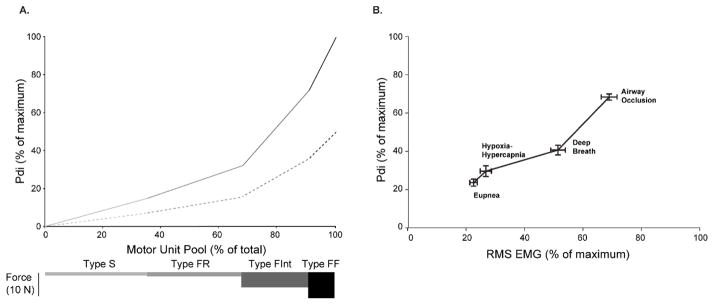Figure 3.
A. Model of motor unit recruitment for the rat DIAm. Motor unit recruitment during ventilatory and higher-force non-ventilatory behaviors was modeled based on an orderly recruitment of motor units (type S followed by FR, FInt, and FF) and the forces generated by motor units of each type (bars below). Models were generated for the intact case (solid line) and the case of only 50% motor units (dashed line). B. Transdiaphragmatic pressures (Pdi) generated during various motor behaviors were normalized to maximum generated by bilateral phrenic nerve stimulation. Relative Pdi measurements and peak DIAm EMG RMS amplitude (normalized to maximum) show parallel changes across motor behaviors of varying force (Pearson r2=0.92; p<0.0001; n=14 adult male Sprague-Dawley rats). Data are summarized from (Gill et al., 2015; Mantilla et al., 2010).

